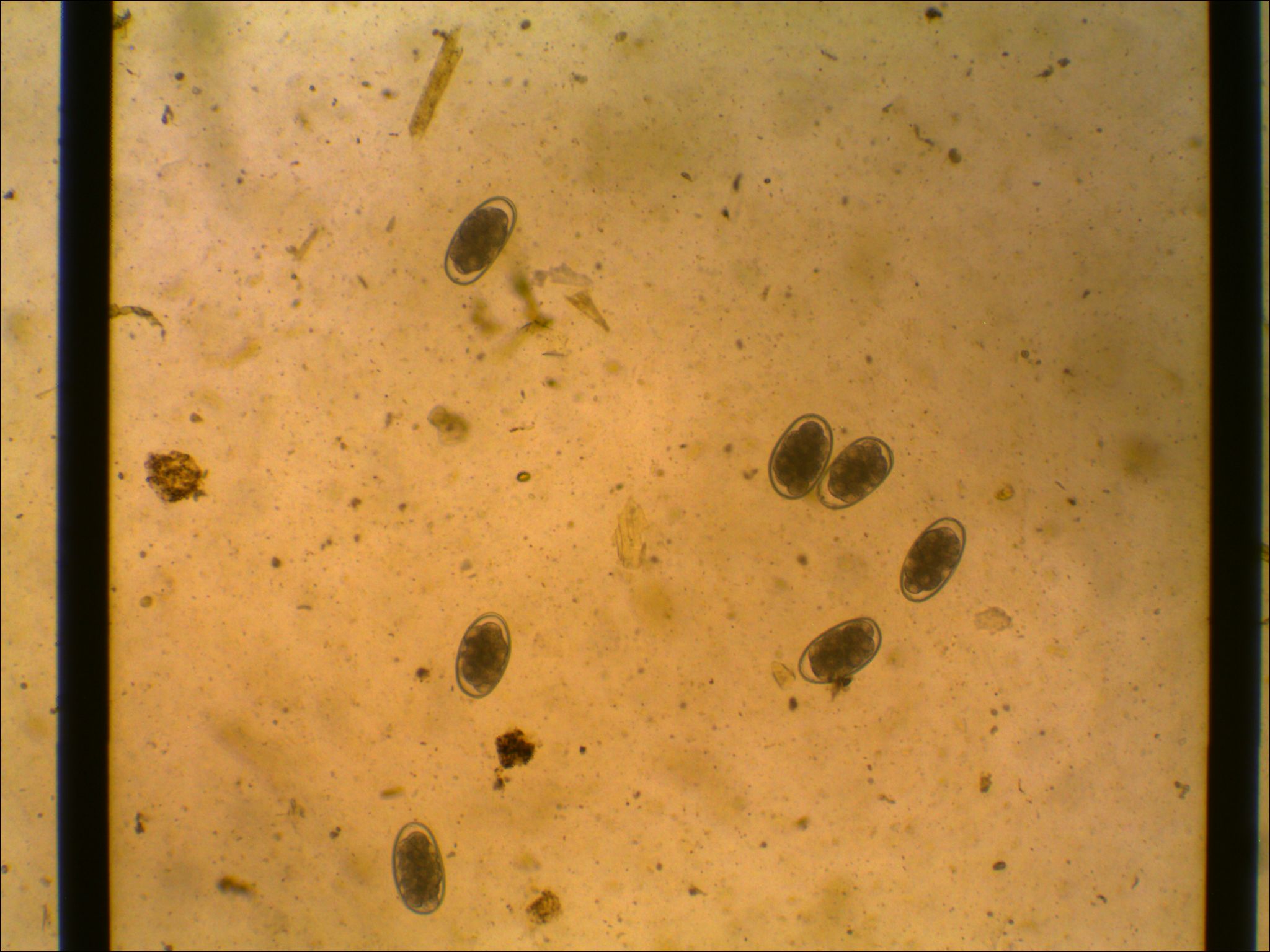Goals of the project
Since the parasite burden in sheep farming is an economic factor that should not be underestimated, strategies should be developed that help to keep the economic damage as low as possible. Until a few years ago, the entire herd was regularly wormed several times a year, but in recent years this has been abandoned and only part of the herd is wormed when necessary. If necessary, this means that the contamination is determined using a fecal sample and then dewormed. Another option is to breed animals that may be resistant or more resistant to parasites. If this trait is to be included in the breeding value estimation, then there must be a practicable way of collecting it. The number of parasite eggs would be one possibility. But it is also about the optimal time for sampling, both in terms of the season and the time of day. This project aims to provide an answer to these questions.
The starting point is a herd of young sheep consisting of 40 animals, half of which consists of mountain sheep and half of Jura sheep. The animals come from several different breeding farms in order to get the greatest possible genetic diversity. As soon as the animals come to Gumpenstein, they are kept in quarantine for two weeks. During this time, each animal's individual daily food intake is recorded. Hay is fed for free consumption plus concentrated feed, 1% of body weight. During these 2 weeks, the animals are weighed twice a week and at the end of this period a body assessment (BCS, body measurements) is carried out. During the grazing period, the animals are then only weighed once a week and assessed once a month.
After individual feed intake, the young sheep are moved to pasture. Throughout the grazing period, parasite load is assessed by regularly examining feces for eggs. The test animals are sampled once a week, once in the morning and once in the evening. Egg excretion is assessed using the McMaster method. Since the egg count does not provide any information about the type of parasite, a fecal sample is incubated a total of 4 times per grazing period and the larvae are used to differentiate the worms. At the same time, the parasite load is checked using the FAMACHE method.
In autumn 2020 the young sheep will be mated with purebred rams for the first time. The female offspring suitable for breeding (from mothers with low parasite loads) will be raised and also subjected to parasite control in the 2021 grazing period, according to the same schedule as their mothers in the 2020 season. The ewes and the offspring will become one in the 2021 to 2023 seasons subjected to regular fecal examinations.
If animals have an excessively high burden of parasites, targeted deworming is carried out, with a fecal sample being taken before and 14 days after deworming for larval differentiation or to check the effectiveness of deworming.
All test animals are genotyped using a high-throughput process for around 50,000 genetic markers (single nucleotide polymorphism, SNP). To do this, DNA is extracted from blood at the Wels branch, part of this DNA is sent to an SNP chip service provider and an aliquot is retained for possible later analyses. The genotypes are associated with parasite control outcomes. The sample is very small for a genetic association analysis, which is why we are looking for ways to cooperate with experimental stations from the Alpine region (Switzerland, Germany, Italy, France) for the genetic analysis. If results for candidate genes for parasite resistance are published during the experimental period (see Kathiravan et al., 2014), it will be possible to control these variants in the SNP chip or through targeted genotyping from the retained DNA.









